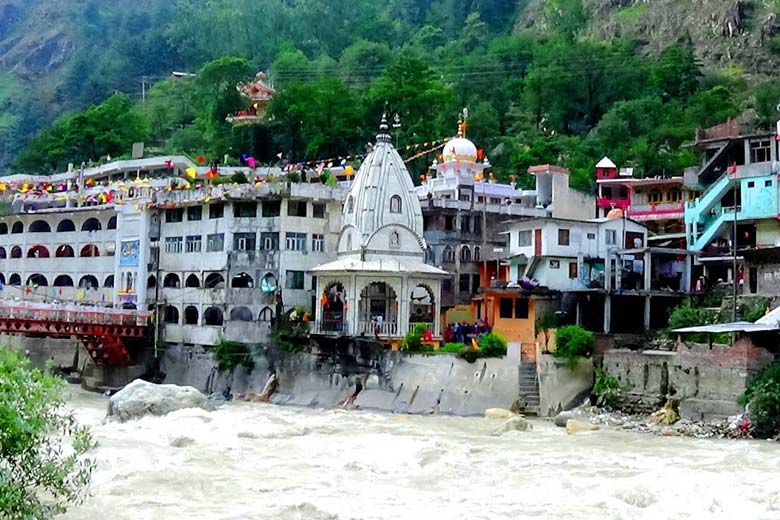There are some places in India that feel less like destinations and more like living legends. Manikaran Shiv Temple, nestled in the lap of the Parvati Valley in Himachal Pradesh, is one such wonder. I remember the first time I walked into this riverside town: the Parvati River roared wildly, hot springs hissed with steam, and the faint sound of temple bells echoed against the surrounding mountains. It wasn’t just another temple visit—it felt like stepping into a landscape where mythology, devotion, and raw Himalayan beauty all come together.
For anyone curious about spirituality, history, or simply the magic of Himachal, Manikaran is not to be missed. Let me take you through the story, the experience, and the soul of this remarkable temple.
The Setting: Parvati Valley’s Raw Beauty
The Parvati Valley, with its towering pine forests and snow-kissed peaks, is already a place that makes you pause. Manikaran sits about 4 km from Kasol and roughly 35 km from Kullu. The moment you approach the town, you hear the Parvati River, thundering past giant boulders, almost as if announcing the energy of the valley.
What makes Manikaran even more unique is its hot springs. Imagine icy mountain air brushing your face while you dip your hands into water so hot that rice can be cooked in it. The geothermal energy here isn’t just a natural wonder—it’s woven deeply into the temple’s daily rituals. Pilgrims often cook their meals, known as langar, in these boiling waters, making food both a community act and a divine offering.
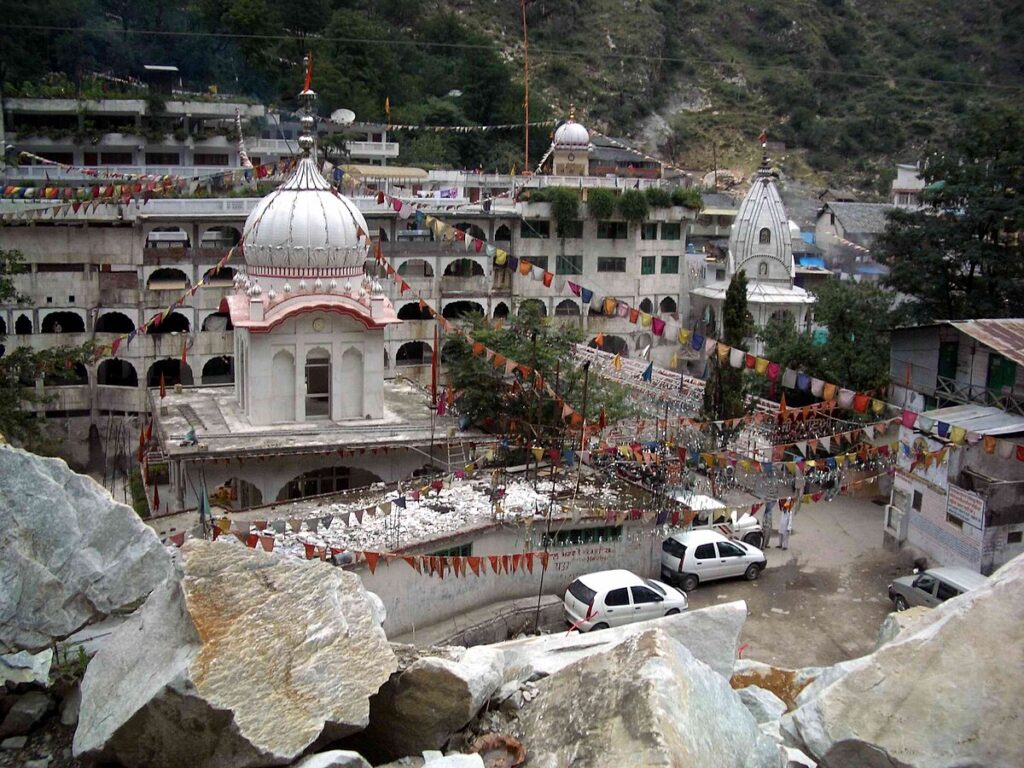
History of Manikaran Shiv Temple – Legends, Faith, and Timeless Mystique
When you first step into Manikaran, a tiny town in Himachal Pradesh’s Parvati Valley, you’re struck by two things—the roaring Parvati River and the clouds of steam rising from natural hot springs. Amidst this dramatic setting lies the Manikaran Shiv Temple, a shrine that feels as old as the mountains themselves.
But behind its present-day form lies a fascinating history—woven from Hindu mythology, Sikh traditions, and natural wonders. To understand Manikaran Shiv Temple is to look at how legend, devotion, and geology merged to create one of Himachal’s most visited sacred sites.
Mythological Origins – Shiva and Parvati’s Jewel
The story of Manikaran begins in ancient Hindu texts and oral traditions. It is said that Lord Shiva and Goddess Parvati once spent thousands of years meditating in the valley. One day, while bathing in the river, Parvati dropped her mani (jewel) into the water. When Shiva’s attendants couldn’t recover it, the Lord grew angry. To calm his wrath, Sheshnag (the serpent god) hissed, and with a surge of energy, the jewel was restored—alongside hot water gushing from the earth.
This act not only pacified Shiva but also sanctified the land forever. Since then, devotees believe the hot springs of Manikaran carry divine blessings, and bathing in them cleanses sins while bringing health and prosperity.
Even today, pilgrims recall this legend as they cook rice in the bubbling waters or bathe in the geothermal pools, keeping the myth alive in everyday rituals.
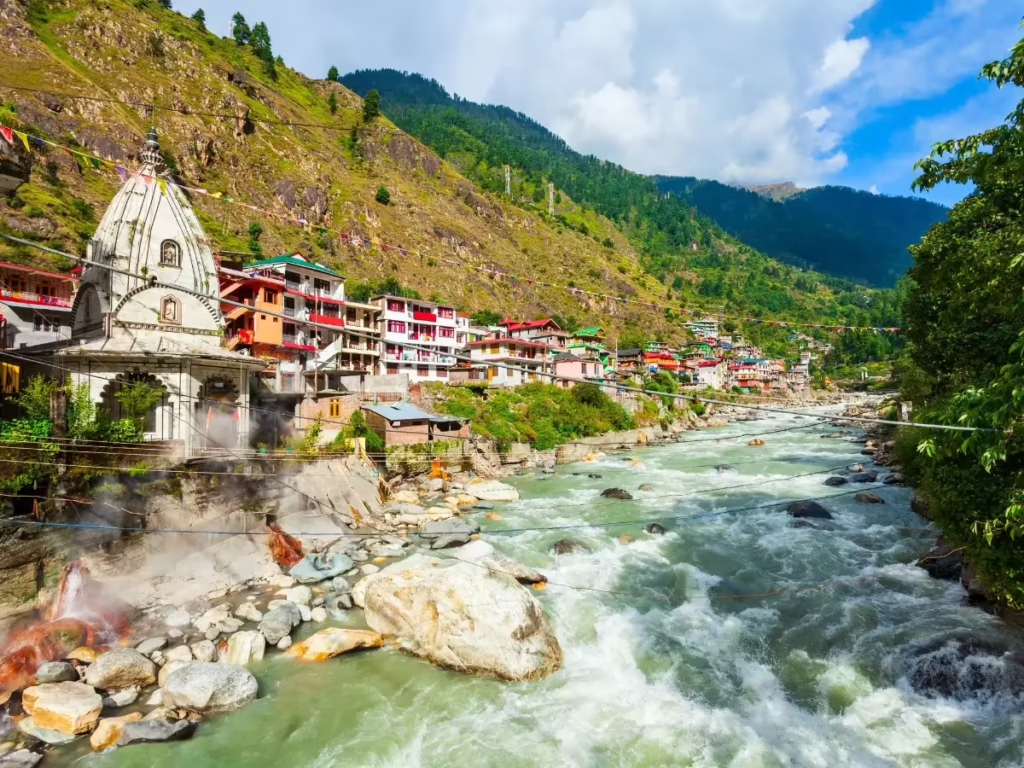
Ancient Pilgrimage Spot
Though it’s hard to put an exact date on the origins of the Shiv Temple, records and oral traditions suggest that Manikaran has been a pilgrimage site for centuries. Its reputation spread far beyond Himachal, drawing saints, sadhus, and common villagers alike.
- Hindu pilgrims arrived to honor Shiva and Parvati, seeing the hot springs as their divine gift.
- Sikh followers began visiting after Guru Nanak’s journey here in the 16th century, which further established Manikaran as a crossroads of spirituality.
The combination of natural phenomena (the springs) and mythology gave Manikaran a special place in the larger Himalayan pilgrimage circuit.
Guru Nanak’s Visit – A Sikh Connection
No history of Manikaran is complete without mentioning its role in Sikhism. According to tradition, Guru Nanak, the founder of Sikhism, visited the valley with his disciple Bhai Mardana. They struggled to find food, and when Mardana expressed hunger, Guru Nanak sent him to collect flour from locals.
But there was a problem—they had no fire to cook. Guru Nanak instructed Mardana to place the rotis (flatbreads) on a stone in the hot springs. To Mardana’s surprise, the breads floated instead of cooking. Guru Nanak then asked him to pray and offer the first bread to God. When he did so, the rotis sank and cooked perfectly.
This event not only satisfied their hunger but also became a profound lesson: faith and offering to the divine come before worldly needs. Today, the Gurudwara Manikaran Sahib commemorates this event, and thousands of pilgrims—Hindus and Sikhs alike—share meals cooked in the very same hot springs.
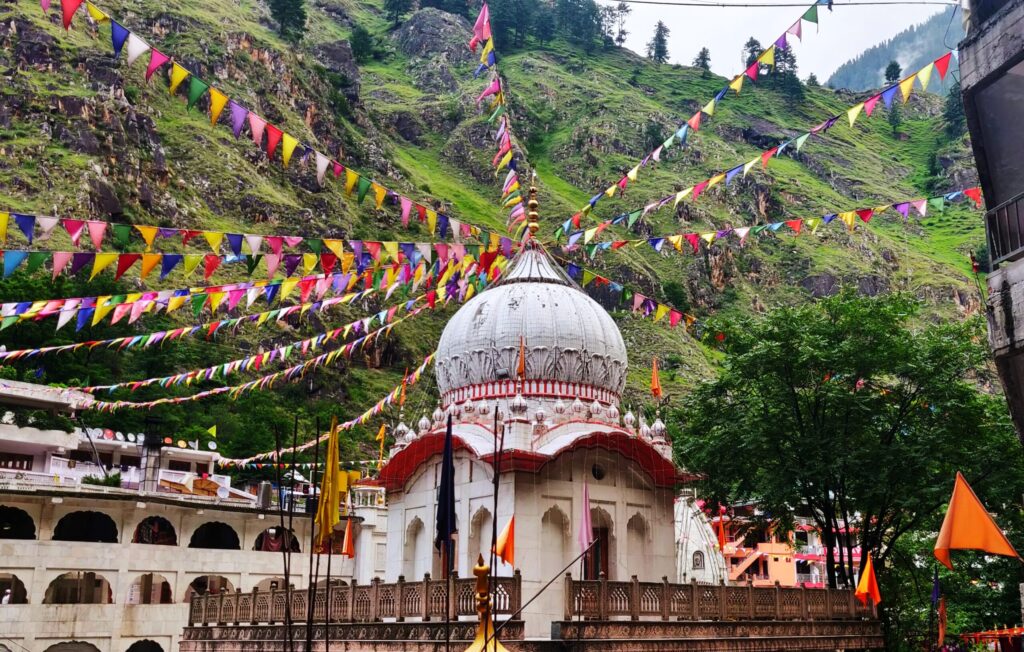
Legends Beyond Shiva – Naina Bhagwati and Pandavas
Apart from Shiva and Guru Nanak, other legends are tied to Manikaran.
- Naina Bhagwati Temple: According to folklore, when Lord Shiva’s consort Sati self-immolated at her father Daksha’s yagna, her eyes (naina) fell at Manikaran. This gave rise to the Naina Bhagwati Temple nearby, strengthening the valley’s spiritual significance.
- Pandavas’ Association: Some locals also believe that the Pandavas from the Mahabharata spent time in Manikaran during their exile, adding another layer of mythic depth to the town.
These overlapping legends explain why the site appeals to devotees from diverse traditions—it isn’t just a temple, it’s a meeting point of multiple stories and beliefs.
Historical Mentions and Cultural Memory
While much of Manikaran’s “history” is wrapped in mythology, travelers’ accounts and local traditions show that it has been a noted pilgrimage center for centuries.
- Early Himachali folklore often references the valley as “the land of gods,” where deities themselves reside.
- Oral histories passed through generations recall how saints and sages performed penance here, drawn by the valley’s solitude and energy.
- Even British officers in the 19th century noted Manikaran’s unusual geothermal activity and its religious significance in their records.
Thus, Manikaran’s story is as much about cultural memory as it is about mythology.
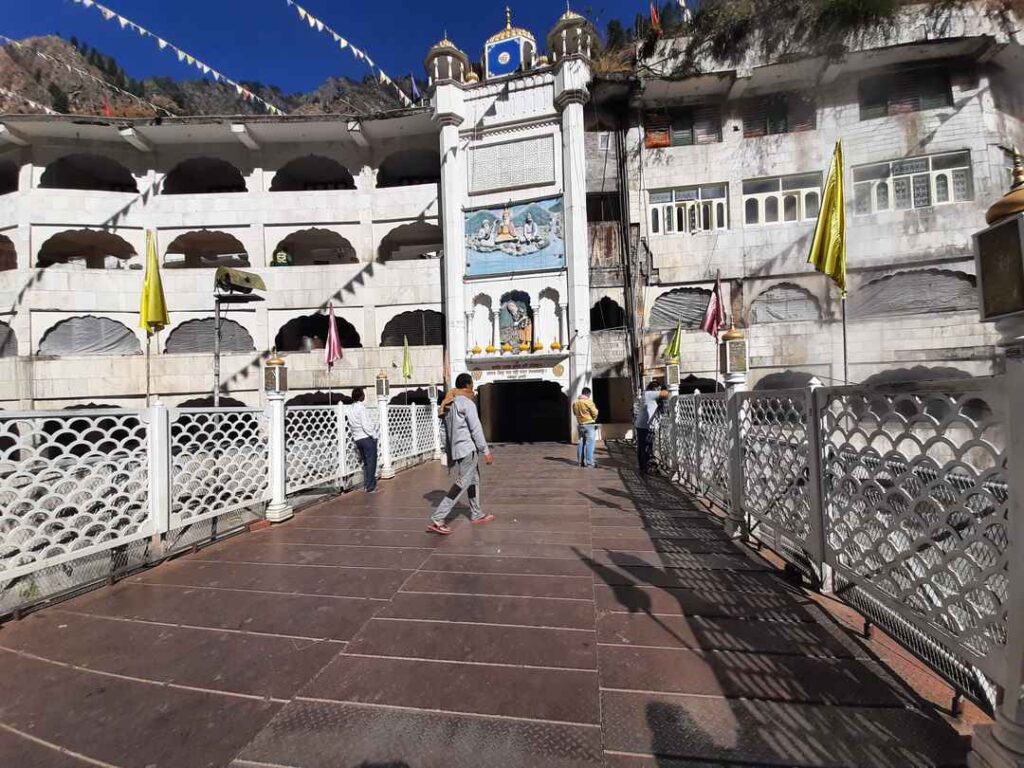
The Role of Hot Springs in Daily Worship
The hot springs are not just side attractions—they’re central to the temple’s identity. Historically, they have been used for both practical and spiritual purposes:
- Cooking Prasad: For centuries, pilgrims have tied rice in cloth and dipped it into the springs, offering it later at the temple.
- Bathing Rituals: Pilgrims believe that bathing in the spring before entering the temple purifies them, much like the Ganga at Haridwar or the Yamuna at Mathura.
- Community Feasts: Over time, these waters became the base of langar traditions, blending Sikh and Hindu practices.
From a scientific point of view, the springs exist due to geothermal energy caused by tectonic activity. But in the eyes of devotees, they remain gifts from Shiva himself.
Evolution of the Temple Complex
Over the centuries, the Shiv Temple at Manikaran has seen multiple reconstructions and expansions:
- The original shrine was modest, built with local stone and wood.
- Earthquakes and natural disasters occasionally damaged the temple, but locals always rebuilt it—believing that its destruction was only temporary, while its divinity was eternal.
- Today, the temple complex includes the main Shiva shrine, bathing pools, langar halls, and adjacent temples dedicated to Vishnu, Rama, and Naina Bhagwati.
Despite renovations, the essence of simplicity remains. The temple’s strength lies not in grandeur but in its raw, elemental connection with the land.
Manikaran Through the Eyes of Pilgrims
Ask anyone who has visited, and you’ll hear similar themes: healing, peace, and energy. Devotees have long claimed that illnesses improve after bathing in the hot springs, and prayers here carry special potency.
Even in ancient times, Manikaran was described as a place where “the earthly meets the divine.” For villagers in Himachal, it was—and still is—a sacred stop on religious journeys, while for saints and sadhus, it offered solitude and a place for tapasya (deep meditation).
The Modern-Day Legacy
Today, the Manikaran Shiv Temple stands as a thriving pilgrimage site, visited by thousands of devotees and tourists every year. Despite modern developments, its aura remains intact. Steam still rises from the ground, the Parvati River still roars with untamed energy, and the temple bells still echo through the valley.
What makes its history unique is that it has never been static. It has grown, adapted, and absorbed influences—from Hindu mythology to Sikh traditions, from local folklore to scientific curiosity. Each layer of history has only added to its mystique.
The Experience of Visiting
Walking into the temple complex, you’re immediately struck by contrasts—the icy winds of the valley, the rising steam from the springs, and the earthy smell of food being prepared in giant pots.
- The Shiv Lingam: At the heart of the temple lies the Shiv lingam, modest in size but immense in spiritual significance. Devotees queue patiently, offering flowers, water, and prayers.
- The Hot Springs: Just outside, you’ll find natural pools where visitors dip their feet or even bathe. It feels surreal—like nature’s own spa gifted to a holy site.
- The Langar: Much like Gurudwaras, the temple organizes a langar where everyone—pilgrims, travelers, locals—sits together and eats. What makes it special here is that many dishes are cooked directly in the hot spring water.
Nearby Attractions Around Manikaran Shiv Temple
While the Manikaran Shiv Temple itself is a spiritual and natural marvel, the beauty of a trip here is that the journey doesn’t end at the temple doors. The surrounding Parvati Valley is full of charming villages, trekking trails, and cultural experiences that make the visit even more memorable. If you’re planning a trip, I highly recommend setting aside a few extra days to explore.
Here’s a look at the best nearby attractions around Manikaran, each with its own vibe and story.
1. Kasol – The Riverside Chill Spot
Only 4 km from Manikaran, Kasol is probably the most talked-about place in Parvati Valley. Known as “Mini Israel” because of its strong Israeli traveler community, Kasol is a delightful blend of hippie cafés, riverside camps, and easygoing vibes.
- What to do: Spend your mornings walking along the Parvati River, sipping chai in cozy cafés, or sampling Israeli dishes like shakshuka and falafel. The evenings are perfect for live music gigs or bonfire nights with fellow travelers.
- Nearby Experiences: Don’t miss the short hike to Chalal village, where you cross a hanging bridge and find yourself in a peaceful riverside hamlet.
Kasol is the perfect base if you want comfort and variety after your temple visit.

2. Tosh – The Mountain Village
A little further uphill, about 20 km from Manikaran, lies Tosh, a small village perched on the edge of the mountains. Getting there involves a bumpy jeep ride followed by a short hike, but the view makes every step worth it.
- What to do: Tosh is a photographer’s paradise. Wooden houses, apple orchards, and snowy peaks create postcard-perfect frames. The sunsets here are unforgettable.
- Activities: It’s also the starting point for several treks like Animal Pass and Pin Parvati Pass (for seasoned trekkers). Even if you’re not trekking, just staying in a Tosh guesthouse and watching the clouds float by is an experience in itself.
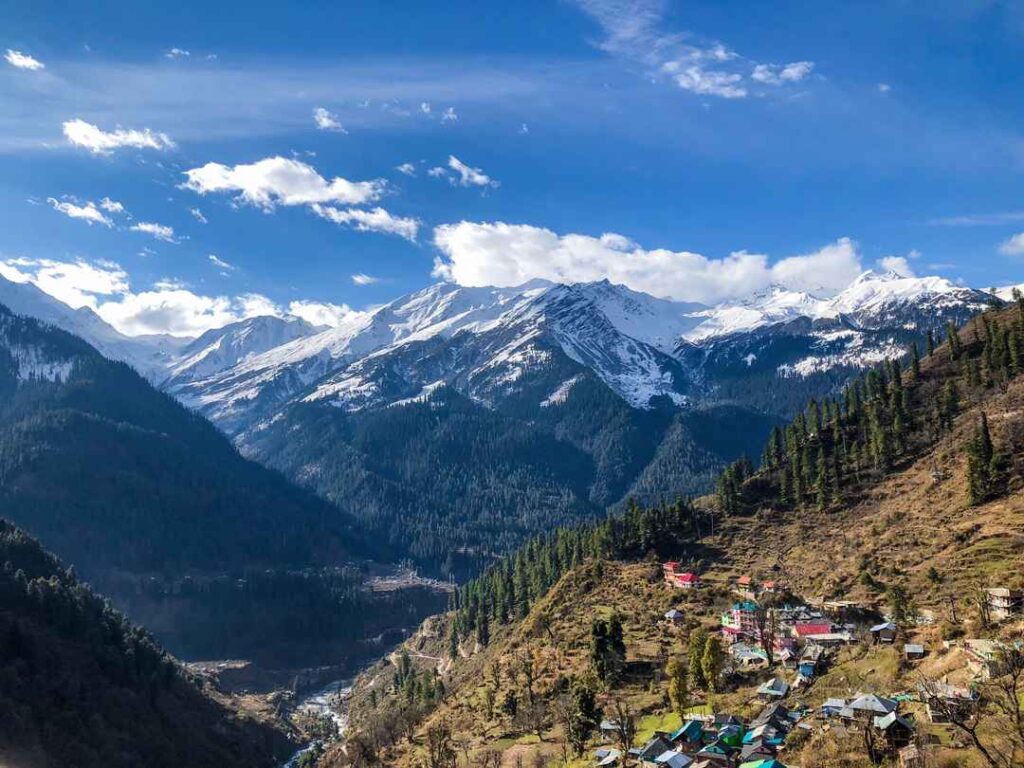
3. Kheerganga Trek – Hot Springs Above the Clouds
If Manikaran’s hot springs fascinated you, wait until you reach Kheerganga, about 12 km from Barshaini (which is close to Manikaran). This trek is one of the most popular in Himachal, and for good reason.
- The Trek: It takes about 4–6 hours of steady walking through pine forests, wooden bridges, and waterfalls. The trail is moderate, so even beginners can attempt it.
- The Reward: At the top, you’re greeted with panoramic mountain views and—you guessed it—another natural hot spring. Bathing in warm water while surrounded by snow peaks is the highlight of the trip.
Many believe that Lord Kartikeya, son of Shiva and Parvati, meditated here, adding another spiritual dimension to the place.
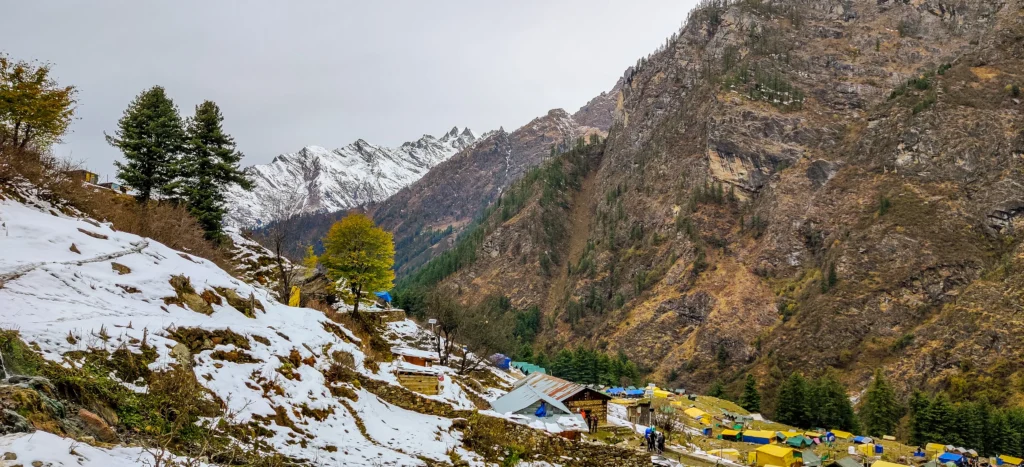
4. Malana – The Ancient Village
A couple of hours’ journey from Manikaran (via Jari), Malana is one of the most intriguing villages in India. Known for its unique culture and traditions, the people of Malana consider themselves descendants of Alexander the Great’s soldiers.
- What makes it special: The village has its own language, governance system, and strict rules about outsiders. Visitors are welcome but are expected not to touch houses or belongings.
- Why go: Apart from the cultural curiosity, Malana is set in breathtaking surroundings with terraced fields and mountain slopes. The hike to reach Malana is steep but rewarding.

5. Pulga and Kalga – Twin Villages of Tranquility
Not far from Barshaini, the villages of Pulga and Kalga offer a quieter, more rustic side of Parvati Valley. If you’ve had your fill of bustling Kasol or touristy Tosh, these villages are perfect retreats.
- Why visit: Pulga is surrounded by lush forests known as the “Fairy Forest”, a magical stretch of deodar trees where you can take peaceful walks. Kalga, on the other hand, has a handful of homestays and orchards that give it a dreamy, pastoral feel.
- Ideal for: Writers, artists, or anyone who just wants to sit back and soak in Himalayan calm.
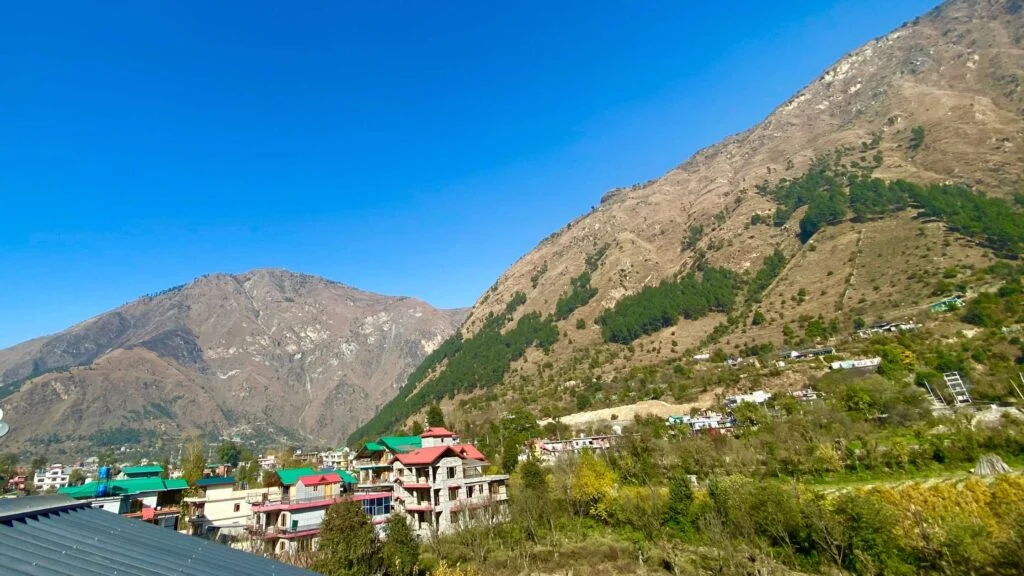
6. Naggar – History and Himalayan Art
Though a bit farther (around 60 km from Manikaran), Naggar deserves a mention for those who enjoy art, history, and heritage. Once the capital of the Kullu Kingdom, Naggar is home to the beautiful Naggar Castle and the Nicolas Roerich Art Gallery, showcasing the Russian painter’s Himalayan landscapes.
- What to expect: Old temples, cobbled streets, and wide views of the Kullu Valley.
- Connection to Manikaran: After a few days of raw spirituality in Manikaran, Naggar offers a more cultural and historical layer to your trip.
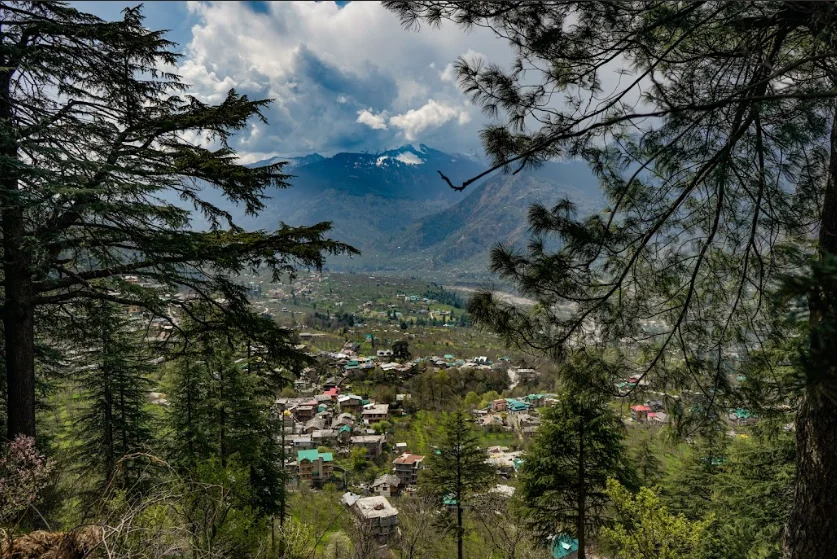
7. Bhuntar and Kullu – Gateway Towns
If you’re traveling in or out of Manikaran, you’ll likely pass through Bhuntar (where the nearest airport is) and Kullu. Though smaller and less atmospheric than Parvati Valley villages, they still have their charms.
- Kullu is famous for its handmade shawls and handicrafts, making it a good place to shop for souvenirs.
- The Bijli Mahadev Temple, perched high above Kullu, is another must-visit for those chasing both views and devotion.
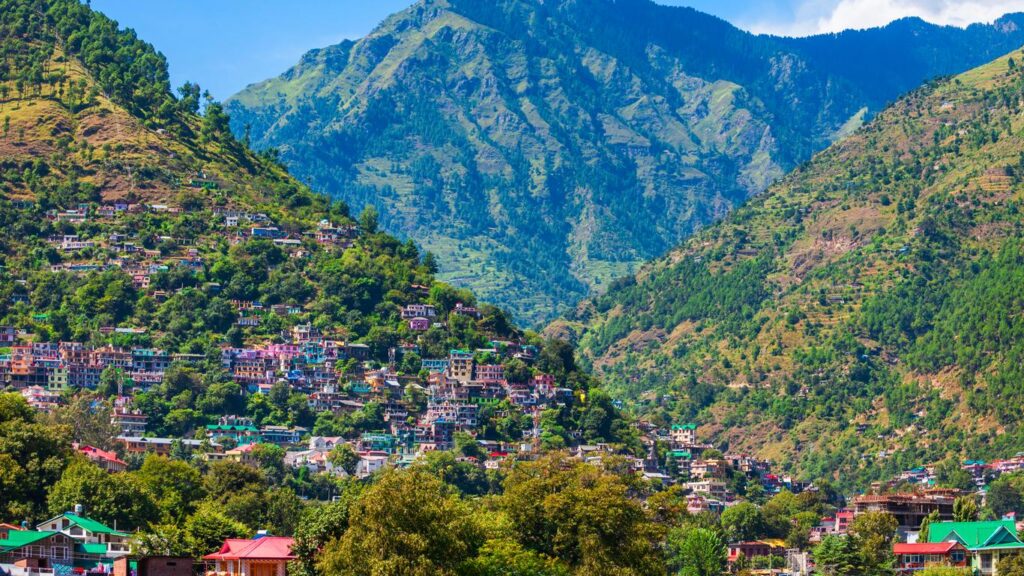
My Story: A Morning in Manikaran
When I visited, it was a chilly March morning. The sky was pale blue, and the river thundered so loudly that it drowned out everything else. Entering the temple courtyard, I was drawn to the pools of steaming water. Pilgrims were placing bundles of rice tied in cloth into the springs. Ten minutes later, they pulled them out—perfectly cooked. Some offered it at the temple, others shared it as prasad.
Inside the sanctum, the air was heavy with incense and the murmur of chants. The Shiv lingam, bathed in offerings, seemed almost alive in the flickering lamplight. An old priest explained the legend to me with the kind of conviction that makes mythology feel like history.
Later, I joined the langar. Sitting cross-legged with strangers who soon felt like family, I ate hot dal, rice, and chapatis. The food, cooked in sacred waters, tasted different—not because of the recipe but because of the love and devotion that went into it.
Beyond the Temple: Manikaran’s Spiritual Diversity
One of the most fascinating aspects of Manikaran is its blend of faiths. While the Shiv Temple is a highlight, the town is also home to important Sikh Gurudwaras. Guru Nanak himself is said to have visited Manikaran, and the hot springs feature in Sikh traditions as well.
Walking a few steps from the temple, you can visit the Gurudwara Manikaran Sahib, where the langar serves thousands daily. The atmosphere is inclusive and welcoming—you don’t have to belong to one faith to feel part of the devotion here.
This mix of Hindu and Sikh traditions makes Manikaran a rare example of spiritual unity.
Activities Around Manikaran
A trip to the Shiv Temple isn’t just about prayer; the surrounding valley offers experiences that stay with you:
- Nature Walks: The forests around are dense with pine and deodar trees. Short hikes offer stunning views of the Parvati River and snow peaks.
- Kasol Village: Just 4 km away, Kasol has become a hub for travelers with its cafés, Israeli food, and riverside walks. It’s a nice contrast to the devotional calm of Manikaran.
- Tosh and Kheerganga Treks: Adventurers often use Manikaran as a base to explore nearby trekking trails. The Kheerganga trek, especially, is famous for its hot springs and panoramic views.
- Local Markets: Small shops sell woolens, handicrafts, and religious souvenirs. Picking up a locally made shawl or bracelet makes a perfect keepsake.
Practical Travel Tips
- Getting There: Manikaran is accessible by road from Bhuntar (nearest airport) and Kullu. Buses and taxis from Kasol are frequent.
- Best Time to Visit: March to June for pleasant weather, September to November for crisp skies. Winters are beautiful but very cold.
- Stay Options: You’ll find budget guesthouses, homestays, and hotels in both Manikaran and Kasol. Many visitors prefer staying in Kasol for better facilities.
- Respect the Culture: Whether at the Shiv Temple or the Gurudwara, modest clothing and respectful behavior go a long way. Photography is welcome in most areas but not inside sanctums.
Why Manikaran Stays With You
It’s hard to leave Manikaran without feeling changed in some way. For some, it’s the spiritual energy of the Shiv Temple. For others, it’s the natural wonder of steaming springs amidst icy winds. And for many, it’s the sense of community—sharing a meal, a prayer, or even silence with strangers.
Personally, I found that Manikaran reminded me of how deeply intertwined India’s spirituality is with its landscapes. The roaring Parvati River, the trembling earth that produces hot springs, the temples and shrines—all seem to tell the same story: of resilience, devotion, and a search for something greater than ourselves.
FAQs
Q1. Where is Manikaran Shiv Temple located?
It is located in Parvati Valley, near Kullu in Himachal Pradesh.
Q2. Which deity is worshipped at Manikaran Temple?
The temple is dedicated to Lord Shiva, along with shrines of Goddess Parvati.
Q3. Why is Manikaran Temple famous?
It is known for its natural hot springs, religious significance, and mythological legends.
Q4. What is the legend behind the hot springs?
According to belief, Goddess Parvati lost her jewel here, and when Lord Shiva grew furious, the springs erupted.
Q5. Can devotees cook in the hot springs?
Yes, many people cook rice by tying it in cloth and immersing it in the boiling waters.
Q6. What is the best time to visit Manikaran Shiv Temple?
March to June and September to November are ideal, with pleasant weather.
Q7. How can one reach the temple?
It is about 35 km from Kullu and 4 km from Kasol, accessible by road.
Q8. Are there any festivals celebrated here?
Maha Shivaratri and other Shiva-related festivals are celebrated with devotion.
Q9. Is there a gurudwara near the temple?
Yes, the famous Manikaran Sahib Gurudwara is located nearby, making the town a multi-faith pilgrimage site.
Q10. Is there any entry fee?
No, entry is free for all visitors.

